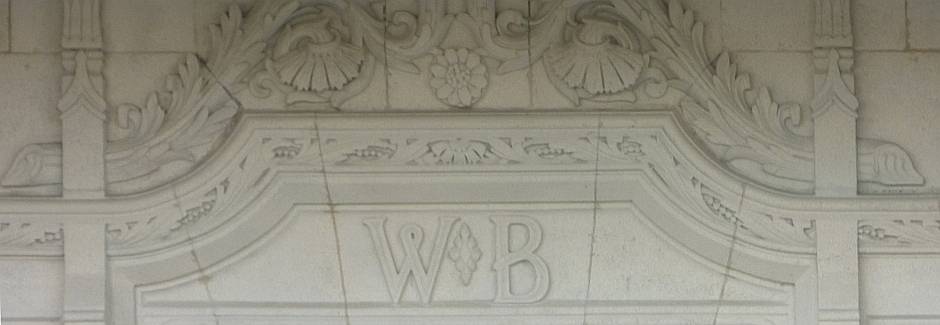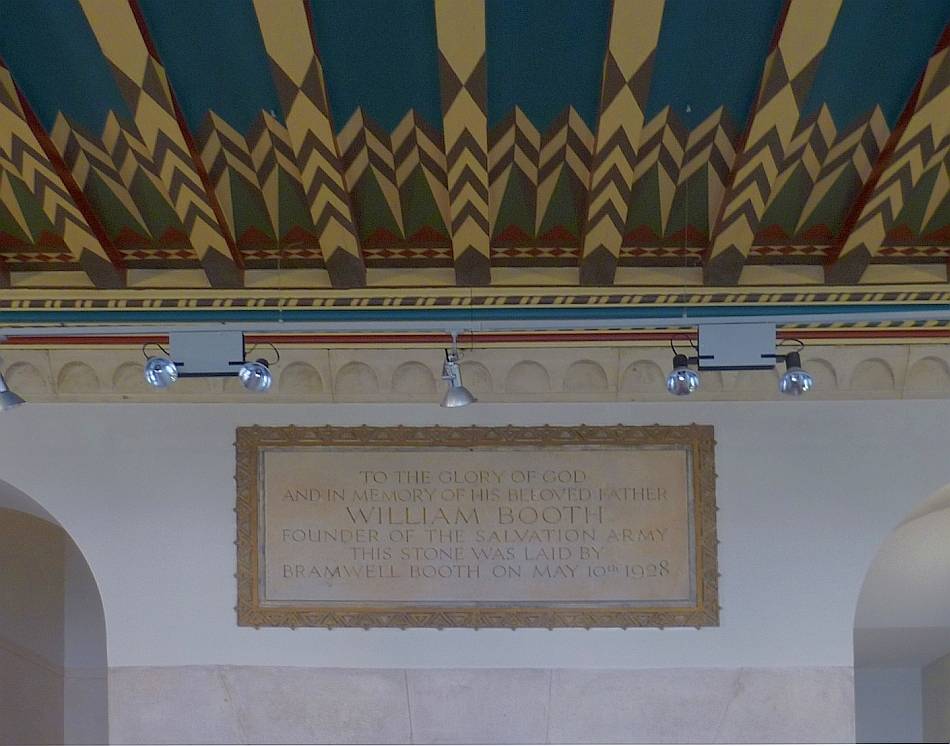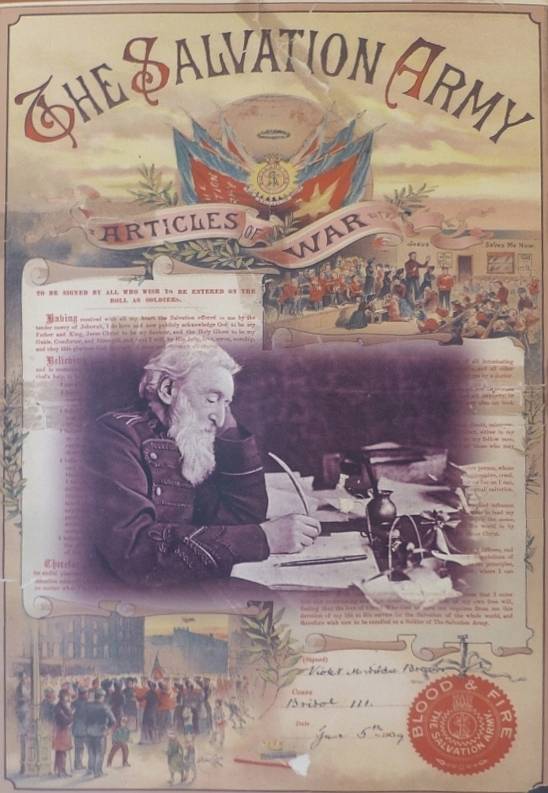William Booth Memorial Training College
Sir Giles Gilbert Scott (associated architect); Gordon & Viner
Opened by Prince George, 8 July 1929
Brown brick with stone dressings
Champion Hill, London SE5
This Grade II listed building stands on an elevation overlooking Denmark Hill station. (Commentary continues below.)
All photographs and text by Jacqueline Banerjee, 2013. Interior ones reproduced here by courtesy of the College, last two pictures by courtesy of the Salvation Army International Heritage Centre. Many thanks.
[You may use the first two exterior photographs without prior permission for any scholarly or educational purpose as long as you (1) credit the photographer and (2) link your document to this URL or cite the Victorian Web in a print document.]
Named in honour of the founder of the Salvation Army, the William Booth Memorial Training College has a "a symmetrical front centred on a massive tower similar to that of Scott's Cambridge University Library" and may well seem "somewhat American Collegiate in flavour" (Cherry and Pevsner 620). However, it is also reminiscent of the same architect's Liverpool Cathedral, and the tall tower here is emblazoned with a large cross.

William Booth's initials over the main entrance. As the listing text says, "Wide, moulded stone arch ... with decorative pedimental treatment above initials 'WB'."
The college was proposed by Booth's son Branwell just after his father's death, as a suitable national tribute to him, and there is a strong sense here of the founder's presence. This is not simply because of the name of the college. There are statues of William Booth and his wife Catherine standing outside it, and William Booth's initials are set over the main entrance. Facing the visitor inside the lobby is a memorial stone laid by his son Branwell on 10 May 1928, "To the glory of God / and in memory of his beloved father."


Left: The Salvation Army insignia set into in the floor tiling of the lobby. Right: Memorial stone to William Booth in the lobby.


Left: Entrance to the International Heritage Centre, on the third floor of the building, showing the familiar uniforms of the Salvation Army.. Right: Poster displayed here showing General William Booth, and the declaration "to be signed by all who wish to be entered on the roll as soldier of the Salvation Army."
Some people thought the Salvation Army would disappear without its energetic and charismatic leader, but the college, which is "still active, has trained thousands of cadets and sent them on their lifetime missions around the world, a fitting and living memorial for the Army founder" (Gariepy 89). As well as its teaching facilities, the building houses the Salvation Army's library, archives and International Heritage Centre.
Note
The Salvation Army International Heritage Centre kindly writes to point out that Sir Giles Gilbert Scott was only partly responsible for the college. As consultant or associated architect, he did indeed design the elevations facing the road (including the characteristic tower). He also stipulated the materials to be used., and was responsible for the interior of the hall. However, the architects for the rest of the site and the interiors were Gordon & Viner, about whom little seems to be known.
Related Material
- George Wade's statue of General William Booth, outside the College
- George Wade's statue of Mrs Catherine Booth, outside the College
- William Booth, Founder of the Salvation Army
- William and Catherine Booth: A Chronology of Founders of the Salvation Army
- The Origin and Early Development of the Salvation Army in Victorian England
References
Cherry, Bridget, and Nikolaus Pevsner. London 2: South. Corrected ed. London: Penguin, 1994. Print.
Gariepy, Henry. Christianity in Action: The International History of the Salvation Army. Michigan, Grand Rapids, and Cambridge (UK): Eerdmans, 2009. Print.
"William Booth Memorial Training College (Main Block), Southwark." British Listed Buildings. Web. 12 April 2013.
Victorian
Web
Visual
Arts
Archi-
tecture
London
Next
Last modified 18 April 2013
